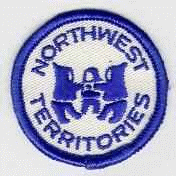
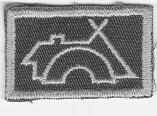

History of Scouting in the NWT
 |
 |
 |
| |
*** a work in progress, please bookmark this page and check back often ***
Do you have a story to
tell about your experiences in Scouting in the NWT and Nunavut?
Please
contact scouteralf.
phone: (867) 445-4128
mail: 60 Mandeville Drive,
Yellowknife, NWT
X1A 3N3
or
email
me.
|
Dedication |
|
Dedication
top
A Short History of the Northwest
Territories
top
Languages of the
NWT
top
Earliest Scouting in
the NWT
top
8th World Jamboree
- Niagara on the Lake, Ontario 1955
top
Northern Committee
on Scouting
Northern Cub Badges
In 1964 the national Council of Scouts Canada authorized the adoption of a series of special badges for use in Arctic communities. The badge requirements illustrate some of the arts, crafts and life skills appropriate to these areas. In large part the requirements for these badges were actually designed by Arctic Scouts. Only Cubs and Scouts who live in the NWT are eligible to earn and wear these badges. (Although I've heard that groups in the Yukon and Northern Alberta have also adopted their use.)
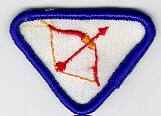 |
BOWMAN 1. Make and use an effective bow and arrow set with weighted arrow for stunning small game and be able to string and unstring a bow. 2. Hit a reasonable target at least 20 yards away about 60% of the time. 3. Know the safety precautions and particularly know why arrows should not be shot straight up. |
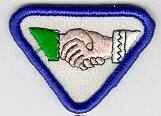 |
CUB INTERPRETER
1. Carry on a conversation in a language not your own. 2. Be able to give clear instruction to someone who can't talk a native language. 3. If an lnuit, know the system of lnuit writing and be able to translate to and from lnuktitut. 4. Be able to read and translate a passage from a book or newspaper. |
 |
GERM ENEMY
1. Keep hands, feet, nails and teeth clean and cared for properly. 2. Know why regular meals and regular sleep are important and make an effort to observe good habits. 3. Know the need for prompt attention to cuts, injuries and skin infections. 4. Know the treatment for fleas and lice. 5. Perform the Cub exercises and walk with good posture. 6. Know why regular exercise is important. |
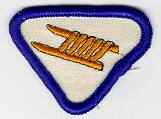 |
KOMATIK DRIVER
1. Have the use of a komatik of suitable size and a - team of at least three dogs. 2. Be able to catch and harness a team and make the dogs obey. 3. Know how to care for dogs, harness the komatik and be able to apply mud and ice to the runners. |
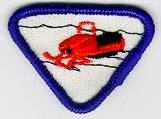 |
SNOWMOBILE
SAFETY ( added in 1974, designed by Kownak Kopee from
Pangnirtung) 1. Know how to ride safely on a snowmobile. 2. Know how to tie a komatik to a snowmobile. 3. Know how to load and tie down the load on a komatik. 4. Know the local by-laws and safety rules for snowmobiles and sleds. |
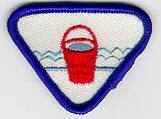 |
WATER BOY 1. Know the importance of clean water supply. 2. Know where to find good ice when the available water is frozen solid. 3. Know why water should be stored in a clean covered container. 4. Show willingness to help get water in a hurry without being told. |
Northern Scout
Badges
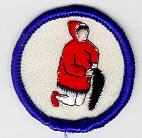 |
CARVER 1. Plan and carve a suitable piece in soapstone or ivory. 2. Know the methods and techniques of finishing and polishing a carving. 3. Be able to show how to sharpen and care for carving tools. |
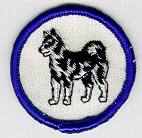 |
DOG DRIVER |
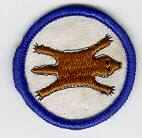 |
FUR TRAPPER
1. Know how to bait, set and care for traps. 2. Know the proper methods of skinning animals and caring for their pelts. 3. Know the importance of regular visits to a trapline. 4. Maintain a trapline for a season and be able to produce a record of the season's work. |
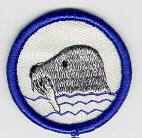 |
HUNTER 1. Know the safety rules for rifle shooting. 2. Demonstrate how to clean a rifle. 3. Own or have the regular use of suitable guns for birds, seals or walrus. 4. Successfully bag wild game with a shotgun or go on seal hunts and either shoot or assist in catching a seal. 5. Know the precautions to take when hunting under Arctic conditions. |
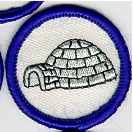 |
IGLOO BUILDER
1. Find correct snow for an igloo. 2. Build an igloo of snow, show the correct way to chink it, place the door in the correct place, make a sleeping bench and add a porch. 3. Final Test: after the igloo has been finished an hour or two, the builder must be able to stand on top of the dome. 4. Build a sleeping shelter - erect vertical walls and cover with skin or tarpaulin. |
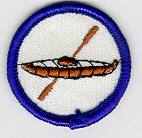 |
KAYAK BUILDER
1. Know how the form of a kayak is made. 2. Be able to recognize kayaks made by various groups of people. 3. Make a model kayak covered with skin which will be watertight, and make a model paddle for the kayak. 4. Know why the shapes of kayaks differ from place to place. 5. Explain the various implements used in hunting from a kayak and be able to demonstrate their use. 6. Paddle a kayak without accident for three miles. |
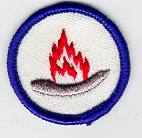 |
LAMP MAKER
1. Make a fat lamp on a stone for light. 2. Make a stone lamp for cooking. 3 Prepare blubber or fat for lamp. 4. Find material for a wick and prepare it. 5. Keep lamp burning and tent it so that it does not smoke. 6. Place lamp on correct supports. 7. Suspend stone cooking pot (or other pot) over the lamp and cook bannock. |
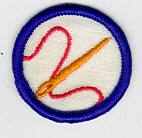 |
SEWING In Caribou country, substitute the
following: |
 |
SNOWMOBILE
DRIVER (added in 1974, designed by Joavee Alivaktuk from
Pangnirtung) 1. Be able to pass the Cub Snowmobile Safety Badge. 2. Know how to start and drive a snowmobile under proper control. 3. Demonstrate how to drive a snowmobile by demonstrating right and left hand figure of eights, driving up and down a hill and on a slope, stopping safely and towing a sled. 4. Know the proper fuel oil mixture for snowmobiles and demonstrate mixing fuel and filling the fuel tank. 5. Know simple snowmobile maintenance, and show how to change a spark plug and drive belt, how to clean the track and carburetor and how to take off and replace the spring on the boogie wheel. |
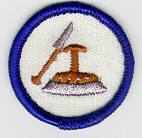 |
SKINNER 1. Flench a skin, dry it by pegging it out. 2. Skin a Fox and stretch dry it. 3. Scrape and prepare a Seal or Caribou skin so that it is soft enough to sew. |
top
Arctic and Northern
Jamboree, Yellowknife 1968
 The Arctic and Northern Jamboree was held at Prelude Lake, 35 km
east of Yellowknife from August 3-10 in 1968. Groups attended from Ontario,
Quebec, Manitoba, Yukon, Alaska, Alberta, USA and Greenland.
The Arctic and Northern Jamboree was held at Prelude Lake, 35 km
east of Yellowknife from August 3-10 in 1968. Groups attended from Ontario,
Quebec, Manitoba, Yukon, Alaska, Alberta, USA and Greenland.
David Tilden was a Scout from Ottawa who
attended the Arctic and Northern Jamboree. He recalls what prompted him to
attend the Jamboree.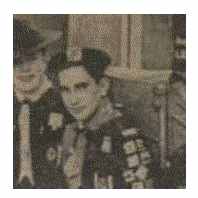
There are 4 boys and two girls in my family, and every one of us has been involved with Cubs or Scouting. I had a brother who went to the World Jamboree in Idaho in 1967. It was a huge Jamboree and he had a fantastic time there. I heard about all the great things that he experienced and I said if there's a Jamboree I want to go to one too. When I heard that there was going to be a Jamboree in the Arctic and that there would be a limited number of Scouts from Ontario, I put my name in straight away and I was lucky enough to be selected. Our troop traveled by train across Canada to Edmonton and then by a propeller driven Canadian Pacific Airways DC-6 to Yellowknife. .
Every contingent had it's own little campsite. I was with the Ontario contingent and there were about 25 or 30 of us. There were a few from everywhere, including quite a few from Northern Ontario. Maybe that's not surprising because they were a bit closer to the North and it's very much like the Territories. There were relatively few from Southern Ontario, but quite a few from Ottawa, possibly because the headquarters was there.
I remember meeting the Inuit kids from all over the Arctic. We called them Eskimos in those days. The Inuit were amazing because they were always carving or cutting up something or eating something that we thought was pretty exotic like raw fish. Some of these kids had never tasted tomatoes or lettuce before. They'd never actually seen these products and their reactions were pretty much the same. They would just take one bite, wince and spit it out because they didn't care for it. I think they liked oranges but that was about the only fresh stuff you saw them eating.
These kids had never seen a tree in their life, and so where were they? They were in the tops of all the trees! Although they had never seen trees, they had their knives and they were always cutting wood, carving things and making use of something they normally never had. They'd never seen a pinecone either, but it was just like a stone and I can remember those kids coming through and raiding our camps with flying pinecones everywhere. They didn't miss.
The mosquitoes were probably the worst. Every day the Armed Forces did us a big favour; at least they thought they were doing us a big favour. In the early morning and early evening they would come through with a big tank truck with a little fogging gun on the back and they would spray big white clouds of DDT through the entire camp. They knew enough to tell us to go indoors into our tents during the spraying and we were supposed to stay there for about 20 minutes after the spraying had taken place. But the mosquitoes were up to it because within about an hour they'd all be back again. We thought we had bad mosquitoes in Ontario, but I think Yellowknife had a fairly moist summer that year and there were lots of them.
Sand got into pretty well everything. You almost felt like the Rat Patrol sometimes it was just so sandy. There was an exercise where we had to go around and link up with people from other camps and it was just a way of getting to know someone from another part of the country. There are a few signatures on this card that are interesting, like Richard Nerysoo (a future territorial politician). Another name on this list brings back a very funny memory. His name was Bruce Z. He was a Scout from Kapuskasing Ontario and I think Bruce was a bit of a wild kid in some ways and he had something of an influence on the rest of us in the camp. He came with a small stereo and a pair of speakers and he had some pretty wild ideas.
There was an open house one day when people from Yellowknife and any tourists that were camping in the area could come and visit the camp and see the different activities. We had been given the job of digging some latrines a few days before the open house. We dug them down deep into the sand and they brought the outhouses and put them on top. Bruce got this idea to put a set of speakers underneath the hole and as it turned out on the day of the open house he waited until some unsuspecting victim went in to use the outhouse and a few minutes after the door closed he said: "Hey lady, you want to hold off on that? We're still working down here!" I tell you, we got in lots of trouble for that! We didn't have much to do with it, but we knew about it and that was enough to get us into a pile of trouble!
During that open house we had a
great feast of northern country food, I guess we'd call it today, but in those
days it was buffalo and lake trout. Commercial fishermen had brought in these
trout from Hay River and they were big 20-30 pound trout, bigger than anything
I'd ever seen. These bison were just massive hindquarters of bison. We dug a
huge pit 5 feet deep and 4 feet wide. We had a huge fire we built in there
until it was a great big bed of coals. Then they wrapped these fish in tons of
foil and all this bison meat again in lots of foil and they put it down in the
coals and buried it for the better part of the day. The fish was overcooked and
the buffalo was pretty rugged I remember. "Tuffalo" we called it. Nevertheless
it was a real experience to eat that.
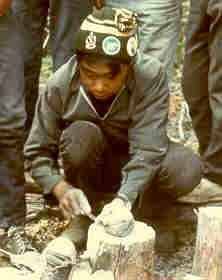
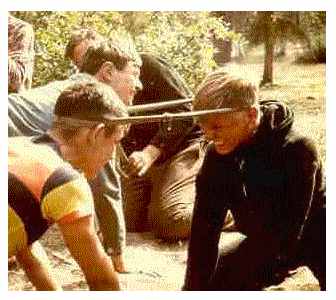 I remember seeing carving and different demonstrations
that were put on and we were very impressed with the Inuit because they seemed
to be extremely good at improvising and with anything that required physical
strength and endurance, they just excelled. There were certainly a lot of games
and activities and building things and all sorts of crafts and skills that were
demonstrated. We were given a chance to do some soapstone carving. I don't
think I was very good at it or had the patience for it. It took quite a bit of
time. Of course there was trading of pins and badges, which was pretty big too.
I remember seeing carving and different demonstrations
that were put on and we were very impressed with the Inuit because they seemed
to be extremely good at improvising and with anything that required physical
strength and endurance, they just excelled. There were certainly a lot of games
and activities and building things and all sorts of crafts and skills that were
demonstrated. We were given a chance to do some soapstone carving. I don't
think I was very good at it or had the patience for it. It took quite a bit of
time. Of course there was trading of pins and badges, which was pretty big too.
I also remember seeing some of the aboriginal games. A lot of those games, they looked pretty simple but they would leave your knuckles or your various body parts sore and you would realize just how tough some of these kids were because although we participated in some of these things, if it came to a real competition, we'd lose hands down every time.
I think for a lot of the kids attending this Jamboree the real insight was learning about Northerners more than the other way around. For some of these kids, the Dene and Inuit from remote communities, it was an insight for them, but I think it was an even bigger insight for us to see how these kids lived and handled knives and ulus and could carve. I guess a lot of these kids they grow up and the first thing they learn to hunt is a ptarmigan, with a stone. Years of practice and those kids, I tell you, if there was a pinecone war going on and they wanted to hit you between the eyes with a pinecone, they'd hit you between the eyes with a pinecone. They did not miss! They were remarkably skilled physically at what they could do with the simplest of resources.
It was very hot at the time and one Inuit 16 year old had a heart attack. He'd been running around and got very hot. Then he dove into the lake and the shock was just too much and he actually had a heart attack. He survived, but it was pretty unusual for that to happen to somebody so young. Some other unfortunate Scout dove into the lake and it was only a couple of feet deep and he broke his neck. So it wasn't without hazards.
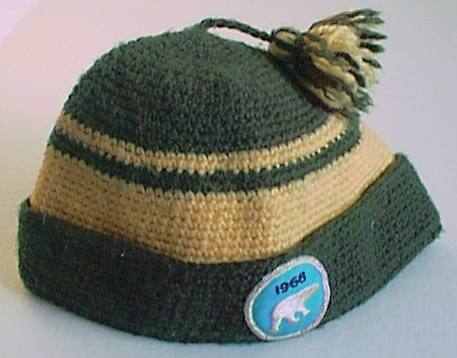 We had a tour of the Giant Gold Mine, saw a
gold pour and what struck me, what stayed in my head was the image of all this
bare, pink rock for about 3 to 4 miles all around the minesite. It was just
absolutely sterile. There was nothing growing at all. There was one place that
had trees, and that was right underneath the roaster stack. There were lots of
green birch trees. Some days we cruised around the town. We went to the
Hudson's bay store and I bought a buckskin jacket in there that I wore for
years afterwards. It always reminded me of my trip to Yellowknife. I have a
survival-swimming certificate that I obtained at this camp at Prelude Lake and
it's dated 1968, but I don't recall the Aquatic Champion Badge. There were a
lot of water activities and we just loved the lake. It was our respite from the
heat and the mosquitoes. We all thought the water was bitterly cold, but we
were softies from the South.
We had a tour of the Giant Gold Mine, saw a
gold pour and what struck me, what stayed in my head was the image of all this
bare, pink rock for about 3 to 4 miles all around the minesite. It was just
absolutely sterile. There was nothing growing at all. There was one place that
had trees, and that was right underneath the roaster stack. There were lots of
green birch trees. Some days we cruised around the town. We went to the
Hudson's bay store and I bought a buckskin jacket in there that I wore for
years afterwards. It always reminded me of my trip to Yellowknife. I have a
survival-swimming certificate that I obtained at this camp at Prelude Lake and
it's dated 1968, but I don't recall the Aquatic Champion Badge. There were a
lot of water activities and we just loved the lake. It was our respite from the
heat and the mosquitoes. We all thought the water was bitterly cold, but we
were softies from the South.
I had the toque that was given to all the participants for many years after the Jamboree until I was 19 or 20 but at some point along the way it disappeared. It was beautiful thick wool, the same consistency and quality of a Pangnirtung hat you'd buy today. It had the polar bear patch and there was no other hat like it. I had that hat for years and it ended up at our cottage in Quebec, and somewhere along the line it seemed to have gone astray.
My father (Walter Tilden) was involved in scouting most of his adult life and eventually became the President of Boy Scouts of Canada. Over the years working with the National Council he got to know a lot of people involved in Scouting in the NWT like Denny May and Denise Burlingame who knew him really well and met him quite often through the years. It's a small world when you get down to it. He still does things with the Scouts even though he's slowing down quite a bit.
I moved to Yellowknife in 1980 from Whitehorse. I was very briefly involved in Scouting in the early 80's and was only involved in a few activities because I had so much travel back and forth across the Arctic. I only planned to stay for two years in 1980. I was going to go back to the Yukon but as you can see something got a hold of me and I'm still here. I never left. I became more and more fascinated with the North. No regrets, I've really enjoyed living here. The first taste of the North came from this Jamboree. It really opened my eyes.
This article entitled "Arctic Jamboree" appeared in the August 16 1968 issue of Time magazine (photo by Jake Oates).
When Prime Minister Trudeau toured
the Arctic last month he hoped aloud that young Canadians would get to know
their far North, "to learn a little of silence and self-sufficiency." Last
week, silence definitely was out and self-sufficiency in, as 550 Boy Scouts
from across Canada, Alaska and Greenland gathered for the first Arctic jamboree
in history beside a lake 25 miles outside of Yellowknife. After a week of such
uniquely northern activities as learning to sew sealskin boots and dining on
barbecued buffalo and Great Slave Lake trout, few were unmoved by Trudeau's
northern vision. Exulted a 14-year-old lad from Nova
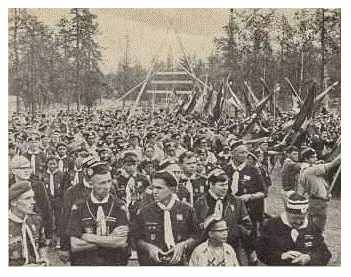 Scotia: "We are here because this is our future." Sense
of Belonging. The jamboree was intended both to give southern scouts a glimpse
of the north, and, more importantly, Indian and Eskimo scouts a sense of
belonging to the international scouting movement. Responding to the call,
scouts came from every region of Canada to join 61 Eskimo and 70 Indian scouts
flown in from all over the Arctic. Former Indian Affairs Minister Arthur Laing
opened the jamboree by calling it "the most important and impressive assembly
of human beings ever brought together in the Northwest Territories." Certainly
the introductions alone were impressive, producing a babel of Indian and Eskimo
dialects along with English and French. Members of a 15-scout unofficial
California contingent were unprepared for the brisk air, while Eskimos who
sampled the 50-degree lake water were astonished at its warmth. Since the first
troop was formed at Aklavik in 1936, scouting in the North has grown to
encompass more than 300 boys, mostly natives. The largest center is Inuvik,
with two troops and 60 boys, and the most northerly is Grise Fiord, where there
is a troop of six. As in the south, church missions and schools sponsor troops.
Scouting follows new airports north, and Gene Gauthier, assistant commissioner
for Northern scouts, is a Pacific Western Airlines pilot. Getting to the
jamboree was a problem for some. To earn travel money and the $65 camp fee,
Fort McPherson scouts trapped muskrats, and at Cambridge Bay the boys cleaned
sidewalks. Eskimos at the Broughton Island settlement chipped in to send their
boys to the jamboree, and the Department of Northern Affairs provided transport
aboard a freight plane. Once there, they were able to show off proficiency
badges that many of the southern boys yearned to earn-for lamp-making,
igloo-building, dog-driving, and one that is awarded for "making a pair of
mitts from the leg of a caribou." Other jamboree diversions included shooting
and archery which revealed that the Indian boys were not particularly
proficient with bows and arrows. For boys who had never been south of the tree
line, the jamboree offered a long anticipated thrill. Billy Audlakiak, from
Broughton Island, needed no prompting when he saw the first trees of his life.
He climbed the tallest he could find.
Scotia: "We are here because this is our future." Sense
of Belonging. The jamboree was intended both to give southern scouts a glimpse
of the north, and, more importantly, Indian and Eskimo scouts a sense of
belonging to the international scouting movement. Responding to the call,
scouts came from every region of Canada to join 61 Eskimo and 70 Indian scouts
flown in from all over the Arctic. Former Indian Affairs Minister Arthur Laing
opened the jamboree by calling it "the most important and impressive assembly
of human beings ever brought together in the Northwest Territories." Certainly
the introductions alone were impressive, producing a babel of Indian and Eskimo
dialects along with English and French. Members of a 15-scout unofficial
California contingent were unprepared for the brisk air, while Eskimos who
sampled the 50-degree lake water were astonished at its warmth. Since the first
troop was formed at Aklavik in 1936, scouting in the North has grown to
encompass more than 300 boys, mostly natives. The largest center is Inuvik,
with two troops and 60 boys, and the most northerly is Grise Fiord, where there
is a troop of six. As in the south, church missions and schools sponsor troops.
Scouting follows new airports north, and Gene Gauthier, assistant commissioner
for Northern scouts, is a Pacific Western Airlines pilot. Getting to the
jamboree was a problem for some. To earn travel money and the $65 camp fee,
Fort McPherson scouts trapped muskrats, and at Cambridge Bay the boys cleaned
sidewalks. Eskimos at the Broughton Island settlement chipped in to send their
boys to the jamboree, and the Department of Northern Affairs provided transport
aboard a freight plane. Once there, they were able to show off proficiency
badges that many of the southern boys yearned to earn-for lamp-making,
igloo-building, dog-driving, and one that is awarded for "making a pair of
mitts from the leg of a caribou." Other jamboree diversions included shooting
and archery which revealed that the Indian boys were not particularly
proficient with bows and arrows. For boys who had never been south of the tree
line, the jamboree offered a long anticipated thrill. Billy Audlakiak, from
Broughton Island, needed no prompting when he saw the first trees of his life.
He climbed the tallest he could find.
From Northern News (Northern Region Scouting Newsletter) Vol 5 #2 Sept - Oct 1968.
Much credit and thanks are due those who worked so diligently at making this unique affair the huge success it was. People like Burt Mortlock from Ottawa, Major General Bill Carr from Winnipeg, Denny May and Harry Holloway from Edmonton, Bill Johnston from Yellowknife, Tom Yate from Inuvik and "Mush" Mersereau from Fort Smith are only a few of the many names that will always be synonymous with the First Arctic and Northern Scout Jamboree. It represented a tremendous breakthrough for Northern Scouting inasmuch as Scouts from all over the Territories have seen the fun of camping and making new friends, and that such undertakings are possible and desirable in the interests of Canada and Canadians.
top
Mackenzie Delta
District Jamboree
top
Great Slave Lake
District Jamboree
top
NWT
Centennial
top
2nd Arctic and
Northern Jamboree
top
Coming of Age - The
Formation of the NWT Scout Council
top
NWT Ready Scout -
Operation Yucch 1973
top
1st NWT Jamboree
1973
top
14th World Jamboree
- Norway, 1975
top
1st Territorial
Camp, Hay River
This Regional Cuboree, the first large Cub "do" in the NWT took place in Paradise Park in Hay River. The following write-up on the Cuboree was found in Council records. No authorship was noted.
The Great Slave Lake Region held a Cuboree at Paradise Gardens near Hay River from June 25 through June 30, 1976. "Mush" Mersereau and wife drove down from Yellowknife early to set up the most important facility in camp - the cookhouse and dining room. Then they did ALL of the cooking for the camp, including snacks on arrival and departure.
That was quite an undertaking as Hay River had 21 Cubs and 3 Leaders, Fort Smith had 12 Cubs and 3 Leaders, Fort Providence had 15 Cubs and 2 Leaders and Yellowknife had 23 Cubs and 7 Leaders for a total of 71 Cubs and 15 Leaders.
The first 2 or 3 days in camp were very wet ones. With the wet weather and an ongoing activity schedule the boys ate like wet, cold and hungry boys will. On the first morning hotcakes were served. They kept "Mush" at the stove for three hours with some boys eating up to 20 of the huge(ly) delicious hotcakes.
With breakfast out of the way, we had our Grand Howl, Flag Break and Inspection. As happens so many times, boys were found putting their bedding out to air in the rain, and some their teddy bears. After morning cores were done, we launched into various wide games.
Every afternoon, half the camp went on a tour of the waterfalls, NTCL's dockyard facilities and for a swim in the Hay River indoor pool. One small newly invested Cub from Yellowknife took one look and promptly climbed the diving board and jumped in. We all like to see boys with pluck - but do wish they would learn to swim first! While this was going on, the other half of the Camp was engaged in nature rambles.
A beautiful Sunday Service of Worship was held in the afternoon. The officiating clergy from Hay River Churches were Pastor E.B. Clarke, Rev J.T. McCollum, Father D. Kroetch and Rev C.F. Pitts. To close the service, the Camp Chief Ken Goldstone presented each of the clergy with the Scout "Thanks Badge".
One of the highlights of the camp was the Olympics, conceived by our Program Consultant Dennis Marshall. The boys were told well in advance we were having the Olympics, but not any details. The obvious athletes were all set to win the Gold Medals. They had a slight shock when they found they had to throw the javelin into the wind. It was found in the qualifying heats, that this frequently resulted in a score of minus 5 feet. Why? Could it be that a peacock feather won't go very far into the wind?
The discus was a paper plate - and no throwing like a Frisbee. This was also done into the wind. The common cry, "Wait for the wind to drop" went on for 2 days.
In the knee "high jump", the length of the jumper's leg from ground to knee is taken. This height was added on top of his head and he had to jump high enough to hit a broom, held horizontally above him with his head. Sounds easy? Try it!
In the broad jump he had to jump backwards. Other than that, the rules were the same as the forward standing broad jump.
In the message relay, each pack was given a message by the Camp Chief. This message was passed down the line to the Akela of each pack who brought it back to the Camp Chief.
The final event was a 3-man water relay race. Each boy in turn dipped a teaspoon into a pail of water and carried it to a glass about 15' away. First team to make the glass overflow was declared the winner.
During the Olympics, the Bagheera of the Yellowknife pack, Bob Ayers, flew over in the RCMP twin otter, and said a few words to us through the loud hailer on the RCMP patrol car which was based in camp at all times. Bob had planned to attend camp but couldn't make it, as he had to fly at the time of the camp. How many leaders get to fly over a camp if they cannot attend?
To wind up the Olympics, the Camp Administrator and Treasurer Bill Johnston presented the winners with a beautiful badge made by his wife Evelyn. On Tuesday, Mayor Don Stewart of Hay River treated us all to a fine barbeque cooked by him. What a feast! Spare ribs, roast beef or chicken with roasted potatoes and salad and plenty of ice-cold pop. And a real bonus - since it was a hot day - a tub full of ice. Just great for rubbing on each other's back!
As in all camps, points were awarded for various things. The Fort Providence Cubs proved to be unbeatable. The Commissioner Bill Johnston presented them with the only Great Slave Lake Region Cub Flag. This flag will hopefully be up for annual competition.
This first major Cub Camp in the NWT has proven such a success that we feel this should be held annually. If this is not practical, then there should be a Cuboree at least every second year. This camp definitely was a great experience for all Cubs and Leaders and it should be a real boost to Cubbing in the communities that participated.
top
Adventure Auyuittuq:
Baffin
top
4th Canadian
Jamboree, PEI 1977
top
2nd NWT Jamboree
1978
top
Great Slave Lake
Region Cuboree - 1978
top
Adventure Auyuittuq
II, 1979
top
5th Canadian
Jamboree, Alberta 1981
top
3rd NWT Jamboree
1982
photos courtesy James
Roszell.
Cameron Falls, about 50 km east of
Yellowknife was the site for the 3rd NWT Jamboree from July 5 - 1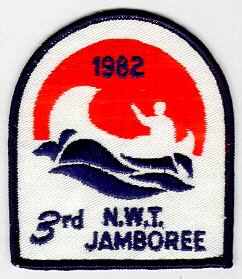 4, 1982. It was planned to be a water-based jamboree consisting
of 1, 2 or 4-day canoe trips. Attendance was limited to approximately 100. The
crest was designed by Lance Bard and utilized the logo from the Explorer Hotel
in Yellowknife with their permission.
4, 1982. It was planned to be a water-based jamboree consisting
of 1, 2 or 4-day canoe trips. Attendance was limited to approximately 100. The
crest was designed by Lance Bard and utilized the logo from the Explorer Hotel
in Yellowknife with their permission.
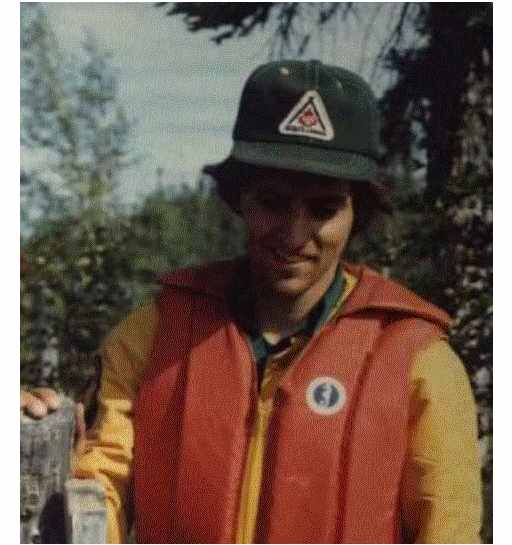 James Roszell was a Scouter with the 1st Yellowknife
who attended the 3rd NWT Jamboree. He currently resides in Manitoba. This is
his recollection:
James Roszell was a Scouter with the 1st Yellowknife
who attended the 3rd NWT Jamboree. He currently resides in Manitoba. This is
his recollection:
"I have many memories from that jamboree. Our group of Scouts from Yellowknife went on a 3-day canoe trip to Hidden Lake. It was just a great jamboree probably unlike any jamborees in the South. The biggest memory and not perhaps my favorite were the bugs: black flies and mosquitoes. They were just unreal. You had hordes hover above your head almost all day long. 1 remember getting up in the morning and in order to eat your breakfast you had to grab your food and walk into the wind or you could end up with a mouth full of fresh uncooked meat in your mouth. The Scouts all came home looking like they had the measles, from all the black fly bites. It was so hard to keep repellent on them as they would put it on but then they would jump into the water and ride the small waterfall down the stream and all the repellent would be washed off. Ah, those were the days."
From the Report from the Executive Director dated October 2, 1982, Denny May gives his assessment of the 3rd NWT Jamboree:
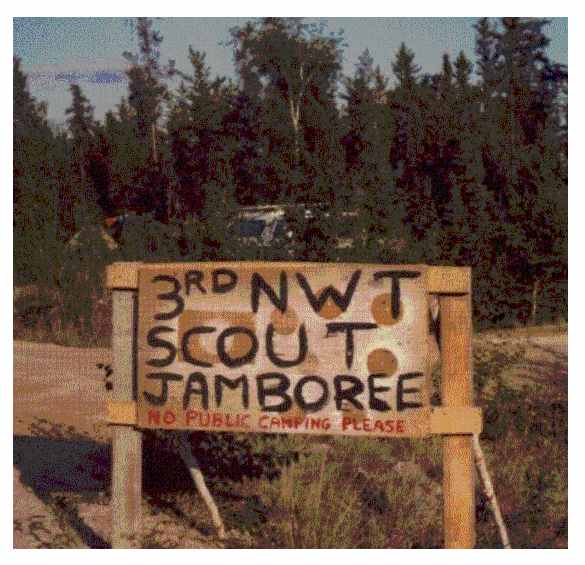 The 3rd N.W.T. Jamboree was in my eyes a great success - we
set out to undertake a very ambitious project involving a great deal of money,
full use of all resources we could possibly imagine, an imaginative program,
and....WE DID IT.
The 3rd N.W.T. Jamboree was in my eyes a great success - we
set out to undertake a very ambitious project involving a great deal of money,
full use of all resources we could possibly imagine, an imaginative program,
and....WE DID IT.
Participation was well scattered - Inuvik & 2nd Yellowknife each sent a Patrol, 1st Yellowknife sent 2 Patrols, and from "south of '60" we had Patrols from: Queen Charlotte Islands, Vancouver in British Columbia; Grande Prairie, Camrose, Hay Lakes & St. Albert in Alberta; Thunder Bay and Thornhill in Ontario; and Seneca District in Quebec.
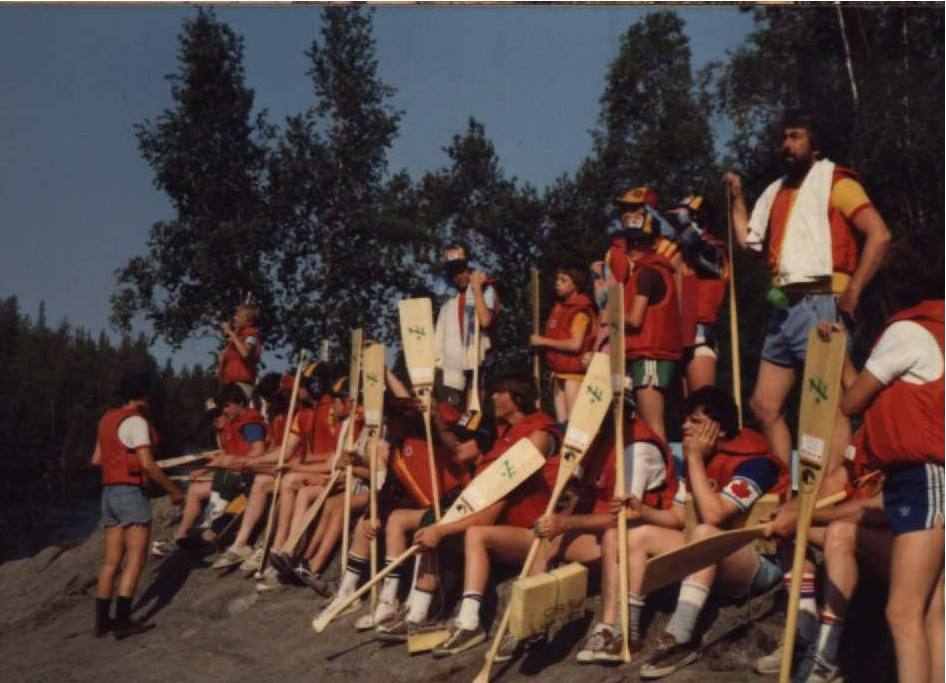 The Program involved full use of the 50 Canoes we
purchased (& re-sold), a very good Training Program in Water & Canoe
skills was undertaken by Sandy & Lance Bard and their staff, followed by 5
days of canoeing on the Cameron River System.
The Program involved full use of the 50 Canoes we
purchased (& re-sold), a very good Training Program in Water & Canoe
skills was undertaken by Sandy & Lance Bard and their staff, followed by 5
days of canoeing on the Cameron River System.
A land program was developed by Bill Moore & his team, which included the Obstacle Course, Compass work, sports. The site & facilities were excellent thanks to Bob Bacchus & his crew; all Equipment was available as required thanks to Sheldon Nider. and the staff were very well fed by Judy Bacchus & Alice Gill.
Marg May handled the Administration white Ron Tuckley & I tried to keep-up to what was going on. We had very good support from Bill Knutsen who provided an airplane to check on canoe routes, run errands to Yellowknife, and just be available, from the Lions Club who put on a great Bar-B-Que for the whole camp, from Frame & Perkins who provided bus transport, from the City of Yellowknife who loaned us 6 Canoes, a truck & trailer for the week, the Red Cross who provided staff, transportation & canoes thanks to a grant from the Canadian Coast Guard.
We operated a canteen (thanks to George Wells), food was purchased from Weaver & Devore & the I.G.A. and Chris Green was our Q.M. ably assisted by Betty Moore. Ronaldo the Magician put on a magic show, campfires were run, Ramona the Raven fluttered into camp, the weather co-operated, the bugs were tolerable - I could go on. and on …. All in all - it was great - my thanks to everybody who was involved - hard work & long hours were the norm - and there are a lot of unsung heroes...... sure we can do the impossible!
top
WJ '83: Kananaskis,
Alberta
top
6th Canadian
Jamboree,: Guelph, Ontario 1985
top
2nd Great Slave
Region Cuboree - Hay River, NWT
top
7th Canadian
Jamboree, PEI 1989
top
8th Canadian
Jamboree, Kananaskis Park, Alberta 1993
top
9th Canadian
Jamboree, Thunder Bay, Ontario 1997
top
The Creation of
Nunavut
top
1st NWT & Nunavut Cuboree: Mowgli's
Midnight Howl - Yellowknife, NWT
 The Cuboree was held at the "Folk on the
Rocks" Site between the Yellowknife Airport and the Golf Course. It's a nice
sandy spot overlooking Long Lake, which was just in the last stages of melting.
The site is totally fenced so Cubs can't wander too far, and its size allows a
fair spread between program areas.
The Cuboree was held at the "Folk on the
Rocks" Site between the Yellowknife Airport and the Golf Course. It's a nice
sandy spot overlooking Long Lake, which was just in the last stages of melting.
The site is totally fenced so Cubs can't wander too far, and its size allows a
fair spread between program areas.
We called the Cuboree "Mowgli's
Midnight Howl" because that was when we were planning on having the opening and
Grand Howl. We decided instead to have it at midnight Iqaluit time since the
Nunavut Contingent was pretty well bagged.
Nunavut was very well represented by the Iqaluit and
Qikiqtarjuaq (Broughton Island) packs. The hamlet of Qik really pulled together
to get their kids out. The community of 490 people has a Cub Pack consisting of
30 kids! They got a great deal from Kenn Borek Air and Canadian North on travel
expenses and Council paid their registration costs. Even still, the community
shelled out some heavy coin to get their Cubs to the Cuboree. There were 3
Leaders and 6 Cubs from Qik, 3 Leaders and 7 Cubs from Iqaluit.
As far
as the NWT, we only had attendance by the Cubs from Yellowknife, which was
disappointing. Inuvik expressed no interest whatsoever, since they attend the
Whitehorse Cuboree every couple of years and the group was pretty well played
out from fund-raising to get their Scouts to PEI. The Hay River group that had
started the previous September folded when the Leader moved in November. An all
too common story in the Territories, how one person holds the entire operation
together.
Then there was the saga of
the Norman Wells Cubs. They had applied for funding from a new government /
industry initiative whose purose was to promote travel for youth to other parts
of the NWT by supplying subsidized air travel. It was announced over the radio
that the Norman Wells Cubs had been awarded complimentary travel vouchers to
attend the Cuboree. Unfortunately, since it was a new venture, they apparently
had a few bugs to iron out. The Norman Wells Cubs weren't notified about it
until the day before the Cuboree. By that time the Cubs had resigned themselves
to not attending and the leaders weren't able to arrange the time off from
work.
The program was designed so that the
Cubs had the opportunity to earn 5 badges: Naturalist, Observer, Bowman, Germ
Enemy and Waterboy. The activities were centered on the first three with the
Germ Enemy and Waterboy left for the Akela's to award from the Cubs camp chores
and cleanup. 
The basic theme behind
the Jamboree was Dinosaurs. We had a Pellet Rifle Range where the Cubs could
shoot at some cardboard dinosaurs (even at this age they try for "crotch
shots!") as well as some static targets. We also had an Archery Range with a
couple of different type targets to shoot at. The Cubs earned a sucker if they
popped a balloon target.
We gave the Cubs a chance to explore the
"newly discovered dinosaur fossil bed" as well. Using a metal detector, the
Cubs were to sweep the area looking for dinosaur skeletons. At one point the
"Dino-finder" would detect something, which they dug up. It turned out to be a
tin labeled "Pirate Treasure". The Scout leading the activity was supposed to
try to get them to put it back in the ground: "Scouter didn't say anything
about digging up Pirate Treasure, put it back!" but then relent and let them
open it up to find a bunch of Gummi worms. (Worked great until one group opened
up their can and discovered it empty. Someone who had already been through that
activity had liberated the treasure. It didn't happen a second time because we
gave warning that it was not appreciated and spoiled the fun for the other
Cubs.) After their Gummi worm treat they would continue until they detected
another anomaly. Although they were supposed to use toothbrushes and
paintbrushes, they usually just dug with their hands to clear away the sand and
unearth the "fossilized" dinosaur skeleton. (It was carved out of wood and
screwed to a sheet of plywood. The screws gave the detector some metal to find.
It took a few days to carve 2x4's down into a passable dinosaur skeleton.)
All in all it was a fun event, and it was gratifying to see Leaders and Cubs throughout the summer who were wearing their Cuboree t-shirt.
top
10th Canadian
Jamboree, PEI 2001
contributers:
scouteralf, geezer.
Cabot Park on Prince Edward Island was once again the location for the Canadian Jamboree held in 2001. The NWT and Nunavut Contingent attending CJ was 54 strong. Scouts from Yellowknife, Norman Wells and Inuvik and Venturers from Yellowknife were in attendance. The following article by Greg Oliver, entitled "It's a Long Way from Yellowknife" was published on the CJ 01 website, canoe.ca
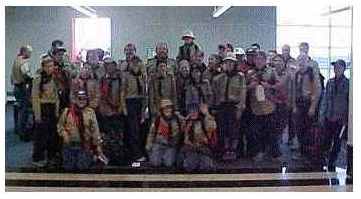 Mike Kalnay is quick to point out that
his group is not, in fact, travelling the longest distance to get to CJ '01 in
Prince Edward Island. While they are coming all the way from Yellowknife in the
Northwest Territories, there are Scouts that he knows about heading down from
Inuvik.
Mike Kalnay is quick to point out that
his group is not, in fact, travelling the longest distance to get to CJ '01 in
Prince Edward Island. While they are coming all the way from Yellowknife in the
Northwest Territories, there are Scouts that he knows about heading down from
Inuvik.
Still, it's an impressive distance that required three years of fund-raising to generate the $2,000 per person that was needed to get the 33 Scouts, Venturers and leaders to Canada's smallest province. "We brought them all," said Kalmay. "Our kids worked hard to earn the money to come here."
Besides the cost, it's a real endurance test to do the travelling as well. The group met at the Yellowknife airport at 6 A.M. on Thursday, arriving in Edmonton about 10 a.m. They were asked by Air Canada to send some of the group immediately on a flight that was about to depart (alas, two patrols had to fly business class). The rest of the crew came on a later flight, and all were gathered in Toronto's airport for an 8 P.M. flight to PEI.
"The excitement was building over the past month," said Kalnay. The group held a massive raffle over the Canada Day weekend, where a $20,000 19-foot Bayliner was given away, as well as a bunch of other great outdoors-related prizes (except for the diamond earrings, a symbol of the burgeoning diamond business in the Northwest Territories). Five thousand tickets were sold.
Randy Fogere, a 13-year-old Scout, was one of the kids out selling the raffle tickets. "If you are in uniform, you can sell better," he explained. Besides the raffle, the Scouts also run a used bookstore in town, and they each have shifts to fulfil.
For the folks from the Northwest Territories, the whole idea of it being summer is a new one. Kalmay brought along some of the Scout summer camping badges to give it. Last time the troop had gone camping in June, the water was still iced over. Plus, the idea of it being dark at night during the summer is also a new one, coming from an area where it is light almost 24 hours a day during the summer.
Though the Jamboree hasn't really even started yet, the planning has already started for the return home. They have an eight-hour layover in Edmonton, and the plan is to go to the West Edmonton Mall. "We have an eight hour delay in Edmonton," said Alyssa Hoeft, a 13-year-old Scout. "What else are you going to do in Edmonton?"
And now ... for the rest of (part of) the story: When the two patrols were asked to fly out of Edmonton on an earlier flight and given business class tickets as incentive, they only had 17 available seats in business class and there were 19 of us. I went up to the Venturer patrol, and told them; "l need a couple of volunteers who want to sit well apart from the rest of us who are going to be sitting close together." I had two eager volunteers who liked the idea of not being under the watchful eyes of their leaders. When it came time to board, and they had to file through business class to get to their seats, my son Andrew gave me such a dirty look. Oh well, taught at an early age that it doesn't pay to volunteer without asking more questions.
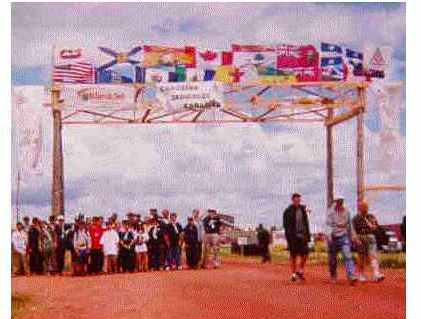 After three different flights and 18 hours of travelling we
finally arrived at the Jamboree site well after midnight, stumbling along in
the dark, finding our sites and setting up just enough to crash for the night.
The three Yellowknife Scout patrols (which included the one and only Norman
Wells Scout) were camping together in a row of sites at the back of Subcamp
Porcupine just beside the border to Subcamp Lynx and we had most of the next
day to get our campsites in shape before we headed out to the opening
ceremonies. It was an awesome site having about 14,000 people gathered
together. Despite the size of the crowd, it still seems the Scouting world is a
small one when I found we were sitting beside the one of the Yukon Patrols
headed by Bill Rivers, whom I had previously only known by email.
After three different flights and 18 hours of travelling we
finally arrived at the Jamboree site well after midnight, stumbling along in
the dark, finding our sites and setting up just enough to crash for the night.
The three Yellowknife Scout patrols (which included the one and only Norman
Wells Scout) were camping together in a row of sites at the back of Subcamp
Porcupine just beside the border to Subcamp Lynx and we had most of the next
day to get our campsites in shape before we headed out to the opening
ceremonies. It was an awesome site having about 14,000 people gathered
together. Despite the size of the crowd, it still seems the Scouting world is a
small one when I found we were sitting beside the one of the Yukon Patrols
headed by Bill Rivers, whom I had previously only known by email.
Their NWT and Nunavut flags were proudly flying, advertised their presence and it was a constant stream of anxious collectors looking for the elusive "Nunavut Contingency badge". One of the Yellowknife patrols eventually had nametags made up at the Trading Post which read "Not from Nunavut". The Yellowknife Venturers were tucked away in relative anonymity in Subcamp Caribou and the two Inuvik Scout patrols who were placed in Subcamp Lynx eventually took their flags down and went into hiding, with the Subcamp staff assisting by removing their unit name from the subcamp map and not giving directions to those who were looking for them. The hazards of having one of the most sought-after Contingent badges at the jamboree were compounded by the issuing, once again, of multiple coloured badges.
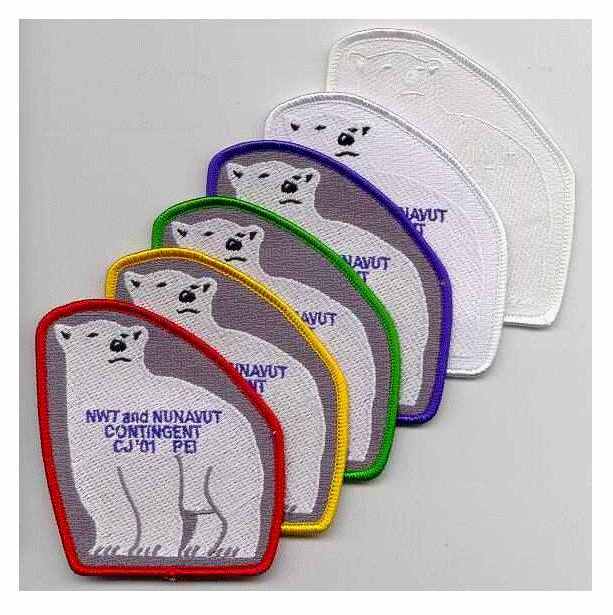
As for CJ 97, this year's contingent badge was issued with different coloured borders acknowledging the participation of various Scouting sections from the Territories: blue for the Yellowknife Venturers, red for the Yellowknife Scouts, green for the Inuvik Scouts and finally yellow for the one and only attending Scout from Norman Wells. As well a special run of badges was ordered with the instructions: "substitute white thread for all other colours".
Down south, this type of badge is known as a "ghost", but we chose to call it the "Territorial Blizzard". We explained why we don't refer to it as a "ghost" like the Yukon and the Yanks do:
The Yukon has a colourful and romantic history surrounding their Gold Rush days and a ghost seems quite appropriate to this rich historical legacy of the Klondike. We (the Territories) don't have the same historical mystique that the Yukon does; we only have our starkly beautiful landscape and our weather to contend with. The "Territorial Blizzard" seemed a more appropriate name for our badge. A few collectors also noticed the connection to the old joke of "the polar bear in a snowstorm".
The Contingent badge was originally planned to be a two-part badge. The left side, smaller badge representing the NWT, was to be a howling wolf and the right side, larger badge representing Nunavut, was to display a Polar Bear. When it came time to order the badges, it was discovered that the Iqaluit Scouts representing Nunavut would not be able to attend CJ after all, so the Polar Bear design was adopted as the NWT and Nunavut Contingent badge.
The badges were ordered from the same overseas badge manufacturer which had produced the CJ '97 NWT Contingent badges. We ordered up a run of 375 of each of the coloured borders and 200 of the "Territorial Blizzard". Every contingent member received 20 coloured borders, 2 "Territorial Blizzards", a ball cap, t-shirt and a couple of luggage tags. The 20 badges were distributed so that everyone had 5 of each coloured border, thus avoiding the collecting difficulty which was experienced at CJ '97 where only one Scouter on Offer of Service was handing out the silver bordered version of the "Ulu".
But, as you can see in the scan above, that there are actually six versions of the NWT and Nunavut Contingent badge. Where did that sixth version come from?
This is the NWT and Nunavut Contingent "Error Bear". It was one of the 5 versions of the badge which originally came from the overseas badge manufacturer. Despite the instructions to: "substitute white thread for all other colours", the Yellowknife business, which served as our contact with the manufacturer, placed the order as: "substitute white .... except for the face of the bear and the writing."
It is an awesome looking badge, but it was not what was ordered, so the badge was refused. It was about a week before the Jamboree and the overseas manufacturer could not make up a replacement run in time. Zone West, who had done an excellent job on the 1st NWT and Nunavut Cuboree badges and t-shirts, was contacted and they guaranteed delivery to the Jamboree site about mid week of the Jamboree. The badge run was actually completed ahead of schedule and Frank Smith, the President of the Badgers Club brought them with him to the Jamboree.
Only one of the "Error Bears" was brought to the Jamboree. Enough people were shown the badge that rumors circulated through the Jamboree site that a 6th NWT and Nunavut Contingent badge was coming. At this point in time, no one knew what we were going to do with the badges. Contingent members were divided on the issue. Half said refuse them totally and give them back, and the other half thought that the Yellowknife business, which was going to take a loss on the badges, was astute enough to realize that there may be a market out there for them. They would probably end up selling them and making a profit. Council finally decided, in February 2002, to purchase the badges, reserving half of the 200 badges for sale to contingent members and the other half to be sold to the Scouting public at large on a first come, first served basis through Scout Shop.
The Pen Pal Award and Twinning Award badges from pre-Council times were re-instated at CJ '01. Patrol Leader Alyssa had been in contact with her pen pal Jessie in PEI for a couple of months before they discovered they were both Scouts and were both planning on attending CJ. Alyssa's pen pal is from 1st St. Eleanor's in Summerside PEI and we had the occasion to be invited over for strawberry shortcake. I checked with the Commissioner (who was my assistant leader for the patrol) about handing out the awards and he thought it was a great idea. We had a nice little ceremony where I gave them a bit of the history and reason that the two awards were introduced more than 30 years ago and let them know it was still important for Northern Scouts to strengthen the bond with their Southern counterparts. I pointed out that between Jessie and Alyssa you had two Scouts; Jessie, one who had the least distance to travel to get to the Jamboree and the other, Alyssa who had one of the greatest distance to travel. After I presented the Pen Pal Awards to Alyssa and Jessie and the Twinning Award flag badge to Scouter Ian, Alyssa promptly pointed out the fact that the badges said "Boy Scouts"!! (I told her it was a very old badge!)
One of the things I found amazing about the Jamboree in PEI was that the wind was incredible. It only let up once on the last day. Since the locals only considered it "breezy", I would hate to imagine one of their storms. In all my years of camping around Yellowknife, I have never used tent pegs. (For good reason with all the rock around here!) Luckily I actually stocked up on pegs before I left for CJ because the wind was constantly pulling the pegs out and flipping the tents over. We actually had 2 of our 6 tents broken because of the force of the wind!
The other thing that amazed me was the dirt! It's neat to see the red colour but my goodness, the darn colour still isn't out of my favourite pair of jeans! Take them out of the wash and they still look dirty! The last day of the Jamboree we had to be packed up and ready to leave at 4:00 AM, so around midnight all the Scouts crashed in a big tent at subcamp headquarters and slept on the ground. All the next day at the airport I would look at our Scouts and think "What a sorry looking lot they are, so dirty looking from sleeping on the PEI ground!" I have learned to sleep sitting up, wrapped in my blanket, so I was, at least, semi-presentable
Honorary Members of Council
Notes on the Distaff Side: Guiding in the
Territories
The history of the Guiding side closely reflects what was going on in the Scouting side, with the move to an independant governing body being realised in the 1970's. I won't attempt to trace any of the rest of the history of the Girl Guides in the NWT and Nunavut. I'll have to leave that to others to expand on this synopsis of the beginning years which is courtesy of the NWT ARCHIVES Report N-1992-274 by Janet Pendleton.
Until 1964, all Girl Guides of Canada activities in the NWT were under the jurisdiction of either the Alberta Council which controlled guiding activities in the Western Arctic, or the Quebec Council, which oversaw guiding activities in the Franklin and Keewatin Districts. In 1965 after lobbying from Local Guiding Associations within the NWT and the Yukon, the Girl Guides of Canada Organisation created the Yukon and Northwest Territories Council which assumed the responsibility for all guiding activities throughout the NWT and Yukon.
In 1965 there were 64 groups of quides\brownies in the NWT and Yukon with a combined membership of 1,200. From 1965 onwards the Yukon and Northwest Territories Council of the Girl Guides of Canada received funding on an annual basis from the NWT's administrative body the Girl Guides of Canada, which was based in Ottawa. This funding was intended to promote guiding activities throughout the north. In 1966 the Yukon Territory was organised into one division with two districts and the NWT was divided into three divisions, the Mackenzie Division, the Franklin Division and the Keewatin Division. By 1968 the Yukon Division was still organised into two administrative districts with a combined membership of 350. In 1968 the NWT Division had been subdivided into 8 districts with a combined membership of 1,356. The NWT districts were Yellowknife, Great Slave Rapids, Southern Slave. Arctic Circle, Nunakput, Keewatin, Frobisher Bay and Baffin. In 1974 the Yukon and Northwest Territories Council was divided into two distinct entities, the Yukon Council and the Northwest Territories Council. At that time the NWT Council reorganised its districts, creating four new administrative divisions: Great Slave, Eastern Arctic, Midnight Sun and Keewatin. In 1983 the Keewatin Division was renamed the Central Arctic Division. In 1985 the Nunakput Division was created. In 1986 the NWT Council reorganised its divisions again, establishing the Kivaliq, Midnight Sun, Nunakput, Great Slave Lake and Eastern Arctic Divisions. In 1988 the NWT Council reorganised its divisions aqain, forming the Eastern Arctic, South Great Slave, North Great Slave, Kivaliq, Midnight Sun and Kitikmeot Divisions. In 1990 the NWT Council underwent a further period of administrative reorganisation, establishing the Eastern Arctic, North Great Slave, South Great Slave, Kitikmeot and Midnight Sun Divisions. Each of these administrative divisions maintained its own executive body which included a District Commissioner who was automatically granted a seat, with voting rights, on the NWT Council. The council met at least twice per year, usually in Yellowknife. All Local Associations throughout the NKTT were required to submit annual reports of their activities to the NWT Council's headquarters in Yellowknife.